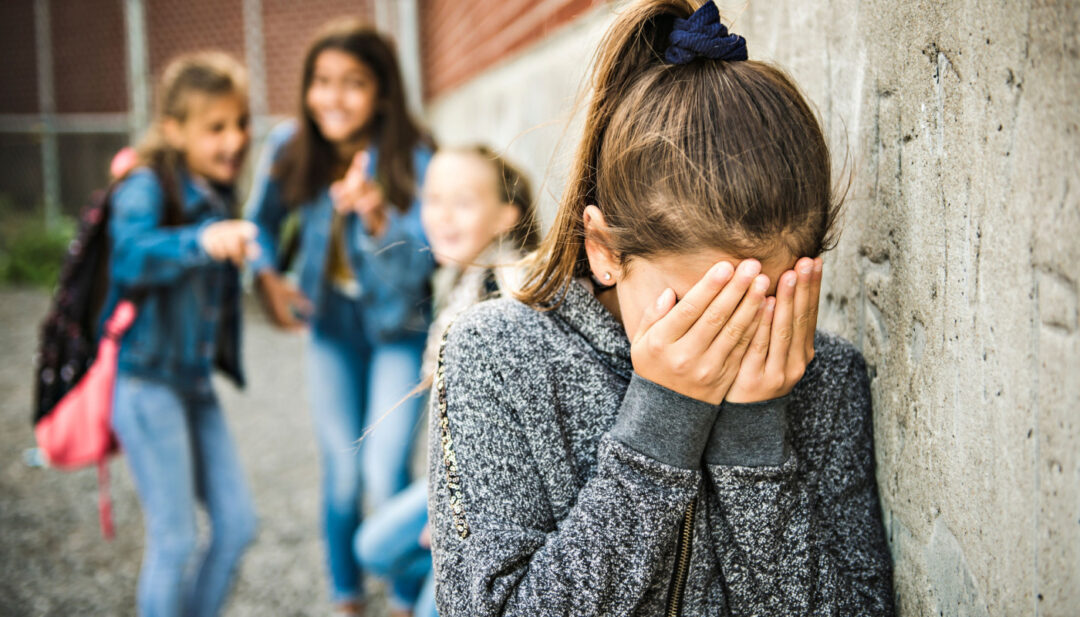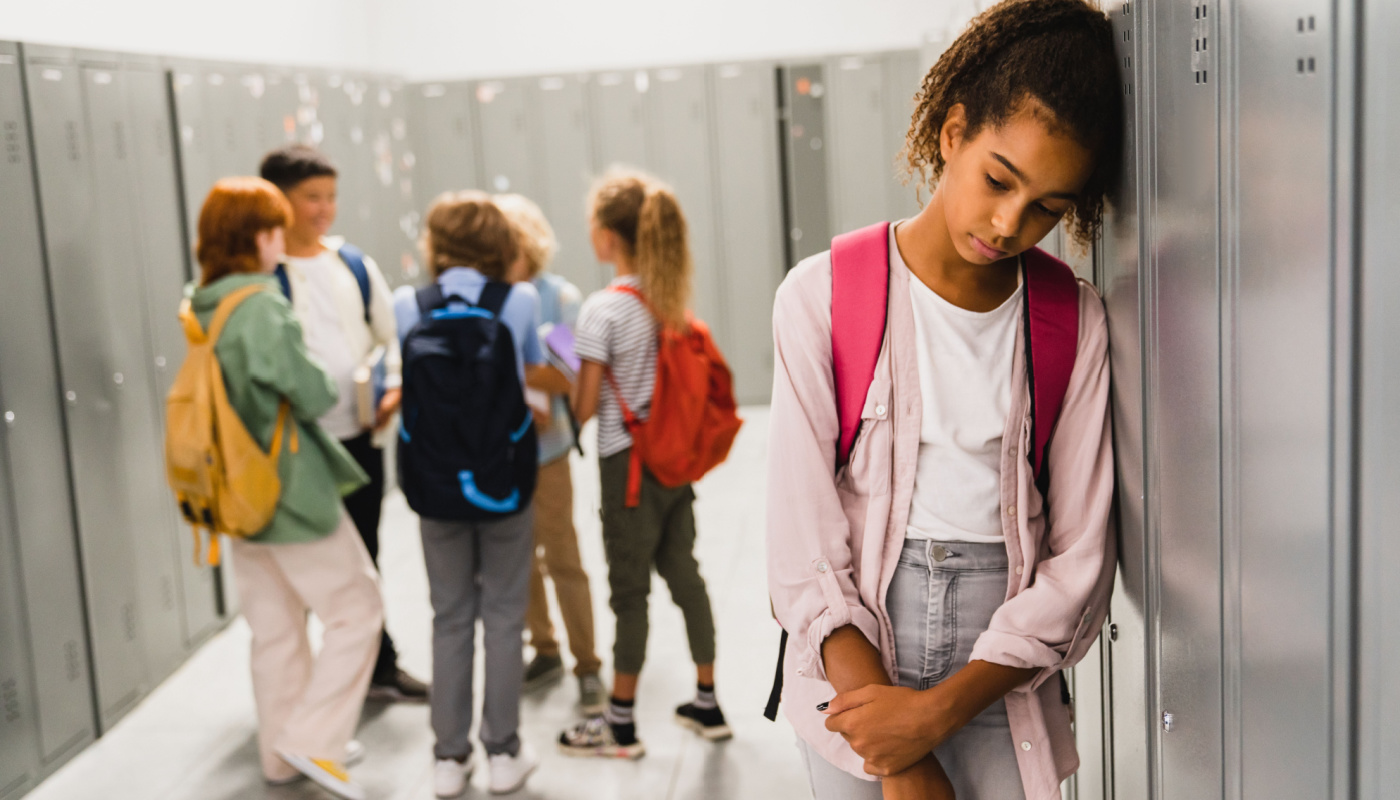
Bullying can occur anywhere in school. Students can tease and demean each other on the playground, in the cafeteria or in class. The internet has only made bullying easier, as aggressors can reach their victims at any hour of the day through digital channels.
Countless educators are working to address bullying in schools in order to create safe learning environments for all students. However, not all anti-bullying programs are effective. Learn more about who gets bullied, how students harass each other, and how to develop effective anti-bullying and anti-cyberbullying policies in your school
Bullying and Cyberbullying are More Prevalent Than Ever
Bullying isn’t a trend that is dying out with younger generations. If anything, bullying is becoming more common but also harder for teachers to spot.
Laura Baker and Arianna Prothero at Education Week recently shared insights into the prevalence of bullying in 2023. Across all grades, bullying is the biggest issue that concerns teachers. In high school, bullying beats out drugs, fights, and self-harm with 31 percent of educators worrying about it the most. Bullying is even more of a safety issue in elementary and middle school, with teachers most concerned about it by a larger margin: 49 percent and 58 percent, respectively.
Additionally, both bullying and cyberbullying are equally common, with 15-16 percent of schools reporting incidents each week. This is different from 2009, when 23% of schools reported incidents of bullying and only 8% of schools reported incidents of cyberbullying.
Unfortunately, there are clear racial disparities between who gets bullied and who the bullies are. According to Yukun Yang, a data scientist at the Boston University Center for Antiracist Research, Black students make up 37 percent of those who report bullying and Hispanic or Latino students make up 20 percent. Meanwhile, of the students who have been disciplined for bullying behaviors, 50.7% are white.
It should be noted that Black students make up just over 15 percent of the K-12 student population and white students comprise over 47 percent.
And in case you think your school is an exception, it’s not.
“The reality is bullying can happen anywhere and everywhere, even if little to no issues are reported,” says Ashley Morolla, a licensed professional counselor in New Jersey. “Instead, it’s much more effective to accept that bullying is a widespread issue, assume it’s taking place in your school or district and come up with policies and frameworks to effectively address incidents when they arise.”
That means that if you don’t think bullying is a significant issue in your school — or even within the grade level you teach — it is likely occurring right within your classroom.

Understanding How and Why Bullying Occurs
Before you dive into bullying prevention, it helps to have a clear idea of what this term means and how it manifests in a school setting. Milena Batanova, director of research and evaluation at the Harvard Graduate School of Education, highlights three key characteristics of bullying:
- There is an imbalance of power — either real or perceived.
- There is repeated aggression or the potential for repetition.
- Those who are targeted experience feelings of being demeaned or intimidated.
Power plays a key role in who is bullied and who becomes a bully. Even young students are establishing social hierarchies that come with certain power dynamics. Many students rely on these hierarchies as they enter their teen years because they are trying to figure out who they are.
Lee Anderson, a former senior writer and editor at Innerbody Research, says there are two types of people likely to become bullies: the socially powerful and the socially isolated.
- Students who are socially powerful know they have friends or teammates to back them up and often bully to maintain that power and social approval.
- Students who are socially isolated can become bullies as a way to elevate themselves over others. They might feel like they are weak or an outsider, so they instead point out the weaknesses of others and push them out of the social group.
Additionally, there is also a significant difference between direct and indirect bullying — which is why bullying can be so hard to spot. According to the group Bullying, No Way, direct bullying is often observed by others. It involves taunting, teasing, name-calling, and even physical aggression. Indirect bullying is more subtle. Examples include failing to invite someone to an event, sharing unflattering information about the person, or making jokes about the person when they aren’t around. The goal of the bully is to harm the victim’s reputation or make them feel left out.
“Bullying is no longer simply taunting or teasing in the schoolyard,” write Elizabeth and Bill Reid, founders of the Jack Reid Foundation, who lost their son to bullying in 2022 at the age of 17. “It has become character assault, the purposeful destruction of someone’s reputation with false rumors, lies and meanness. Repeatedly and with an audience, in person and online.”
Cyberbullying Brings Standard Bullying to Digital Channels
Cyberbullying was a concern before the remote learning periods of the COVID-19 pandemic, and continues to be prevalent today. It ranges from online name-calling to sending threatening or intimidating messages. As students get older, they might receive sexually harassing or explicit messages from their peers.
Teachers often struggle to prevent cyberbullying or punish those who do it because this form of harassment occurs outside of the classroom. It is hard to track and rarely reported.
“One suggestion to help stop this issue from spreading is to teach kids how to protect themselves and others from these harmful abusers,” writes the team at Delete Cyberbullying. “Schools can teach children about cyberbullying and how to identify red flags for potential abuse.”
The organization encourages schools to involve parents in cyberbullying education in order to empower them to intervene as soon as they can.
It’s important to note that students don’t have to be direct targets of cyberbullying to be hurt by it. “If your kid is on a group text and some other kid is being called a slur, a homophobic slur or a racist slur, your kid is still going to be affected by it,” says Devorah Heitner, author of “Screenwise: Helping Kids Thrive (and Survive) in Their Digital World.”
Children who see how others are treated badly online worry about how they are perceived because of those insults and slurs. For example, a group of bullies making fun of someone’s weight online can harm the body images of students who read those comments and internalize fatphobic beliefs.

Effective Bullying Prevention
There are several videos and activities online that talk about bullying. It’s important to make sure that these resources are effective and actionable. Asking middle school students to create anti-bullying bracelets might seem like a fun activity, but it won’t necessarily empower them to speak up or report problems.
“It turns out that when kids are equipped with strategies to respond to bullying, children feel more confident and in control of their situation, and children who know how to respond effectively are less likely to be targeted,” says Jeanne Sager, content marketing manager at TeachStarter.
Sager shares a poster that details what students can do when they experience bullying, ranging from walking away from the situation to using confident words to tell the bully to stop.
The messaging of your lesson plans shouldn’t just address the bullies and the victims. Every student is affected by bullying in some way, whether they are the ones getting harassed or have seen it happen.
“Research is clear that to reduce bullying, we must give children social skills to use in peer relationships,” write Brooke Paskewich and Tracy Evian Waasdorp for the Children’s Hospital of Philadelphia. “The focus cannot be exclusively on the victim or the child(ren) who engaged in the bullying behaviors—we must also equip children with strategies to use if they are a bystander of bullying.”
Bystanders play a key role in how comfortable a bully feels with their actions or how safe a victim feels when standing up for themselves or seeking help.
“Anti-bullying assemblies often focus on the bully or victim, but bystanders can play an immense role in putting a stop to bullying,” writes Sachika Saxena at I Can Help. “However, studies show that as the number of bystanders increases, there’s a decreasing chance that people will intervene in bullying situations. Students need to be taught how to intervene safely and respectfully — to become upstanders instead of bystanders.”
With a larger group of bystanders, students can assume that someone else will speak up and stop the bullying. The problem is, other bystanders might be too intimidated by the crowd to make their voices heard.

Ineffective Bullying Prevention
As your school works to assess and implement anti-bullying and anti-cyberbullying programs, learn what doesn’t work and why these programs are ineffective. Dr. Melinda Bossenmeyer, founder and president of Peaceful Playgrounds, lists some policies that are problematic:
- Zero-tolerance policies. Nearly 20 percent of students engage in bullying practices and it’s impractical to kick that many students out of school.
- Group therapy. Rather than putting bullies with good role models, this option enmeshes students with other negative influences.
- Conflict resolution. Bringing all parties together for mediation can be highly stressful for the victim. There is no middle ground here or opportunities to compromise. No one should be bullied.
These methods are outdated and can potentially cause more harm than good — for both the bully and the victim. Even isolating the bully from the rest of the class can create further antisocial behaviors.
Next, evaluate why students in your school or classroom don’t report bullying. It is important to assume that bullying is happening in your school, whether you see it or not. Medical writer Katelyn Holt sets out reasons why students don’t report harassment:
- The student feels helpless.
- They don’t want to be seen as a tattletale.
- They worry about backlash.
- The student doesn’t believe adults will help them.
- They think they can handle it on their own.
- They worry adults might judge them.
- They don’t think anyone cares.
- They don’t want to be rejected by their peers.
While teachers can’t get to the root of all these issues, they can focus on the aspects of believing students, not judging them, caring about their needs, and taking action to address the issue. When students see that bullying is stopped in its tracks, they will be more likely to report it.
Finally, evaluate whether or not your current policies are effective. Underfunded or underenforced anti-bullying policies can do more harm than good because they can cause victims to lose faith in the resources that are supposed to help them.
“Although many schools have anti-bullying policies, these policies may vary in their scope, content, and implementation,” writes the team at Konsistent. “Moreover, some schools may not enforce their policies consistently or may not have consequences for bullying behavior.”
It’s unrealistic to believe that you can create a bully-free school where students support each other in person and online. Kids can be mean and teens want to test their boundaries. Instead, use this guide to create effective and actionable strategies for your students to employ when they encounter a bully. Make sure your school policies actually intervene to address bullying issues. These are your best options to create a safe learning environment.
Images used under license from Shutterstock.com.

